Using Analytics to Optimize Your eCommerce Store
In today’s competitive eCommerce landscape, data-driven decisions can make or break your online store's success. Leveraging analytics to optimize your eCommerce store not only helps you understand customer behavior but also allows you to make informed decisions that enhance performance and drive growth. Here’s how you can use analytics to improve your online store’s performance:
![[object Object]](https://clipl-web1.sgp1.cdn.digitaloceanspaces.com/images/clzmeq0ec00t632qg89dthstg.png)
Start by identifying and tracking key performance indicators (KPIs) that align with your business goals. Common KPIs for eCommerce stores include:
- Conversion Rate: The percentage of visitors who complete a purchase.
- Average Order Value (AOV): The average amount spent per order.
- Customer Lifetime Value (CLV): The total revenue a customer is expected to generate during their lifetime.
- Cart Abandonment Rate: The percentage of shoppers who add items to their cart but do not complete the purchase.
Tools like Google Analytics, Shopify Analytics, or BigCommerce Analytics can provide insights into these metrics, helping you monitor your store's performance effectively.
![[object Object]](https://clipl-web1.sgp1.cdn.digitaloceanspaces.com/images/clu85bf9k004n4irzce91hblw.png)
Understanding how customers interact with your store is crucial. Use analytics to:
- Track User Journeys: Monitor how users navigate through your site, from landing pages to checkout. Identify any bottlenecks or drop-off points that may hinder conversions.
- Segment Your Audience: Divide your audience into segments based on demographics, behavior, or purchasing patterns. Tailor your marketing strategies to meet the specific needs of each segment.
- Monitor Engagement: Analyze metrics like page views, bounce rates, and time spent on pages to gauge how engaging your content is.
![[object Object]](https://clipl-web1.sgp1.cdn.digitaloceanspaces.com/images/clu85gka7004r4irzd91c371v.png)
Analytics can help you refine your product listings to maximize sales:
- Identify Best-Selling Products: Use sales data to determine which products are performing well and which are not. Promote best-sellers or adjust strategies for underperforming items.
- Analyze Product Performance: Track metrics such as product page views, add-to-cart rates, and conversion rates to understand product performance.
- Adjust Pricing Strategies: Use data to evaluate the impact of pricing changes on sales and profitability. Implement dynamic pricing strategies based on demand and competition.
![[object Object]](https://clipl-web1.sgp1.cdn.digitaloceanspaces.com/images/clw7br1ug003e4crz8w6ygj2t.png)
Optimize your marketing efforts using analytics:
- Evaluate Campaign Performance: Track the performance of your marketing campaigns, including email, social media, and paid ads. Analyze metrics such as click-through rates (CTR), conversion rates, and return on investment (ROI).
- A/B Testing: Conduct A/B tests to compare different versions of your marketing materials or website elements. Use analytics to determine which versions yield better results and implement the winning variations.
- Optimize Ad Spend: Use analytics to assess the effectiveness of your ad spend. Adjust budgets and targeting based on performance data to maximize your advertising ROI.
![[object Object]](https://clipl-web1.sgp1.cdn.digitaloceanspaces.com/images/clu85g32c004p4irz90k4e9u5.png)
Enhancing customer experience is key to boosting satisfaction and loyalty:
- Monitor Customer Feedback: Analyze customer reviews, ratings, and feedback to identify areas for improvement. Address common issues or complaints to enhance overall satisfaction.
- Personalize Experiences: Use data to personalize the shopping experience, such as recommending products based on browsing history or previous purchases.
- Optimize Site Performance: Track site speed and performance metrics. A fast-loading website improves user experience and reduces bounce rates.
Implement Predictive Analytics
Predictive analytics can help you anticipate future trends and make proactive decisions:
- Forecast Demand: Use historical data to predict future demand for products. Prepare inventory accordingly to avoid stockouts or overstocking.
- Customer Retention: Analyze customer behavior to identify patterns that indicate potential churn. Implement strategies to retain at-risk customers and increase loyalty.
Conclusion
Using analytics to optimize your eCommerce store involves more than just tracking numbers; it’s about translating data into actionable insights that drive growth and enhance performance. By focusing on key metrics, understanding customer behavior, refining product listings, optimizing marketing strategies, improving customer experience, and leveraging predictive analytics, you can make data-driven decisions that propel your online store towards success.
Stay ahead of the competition and unlock your eCommerce store’s full potential with the power of analytics!
























